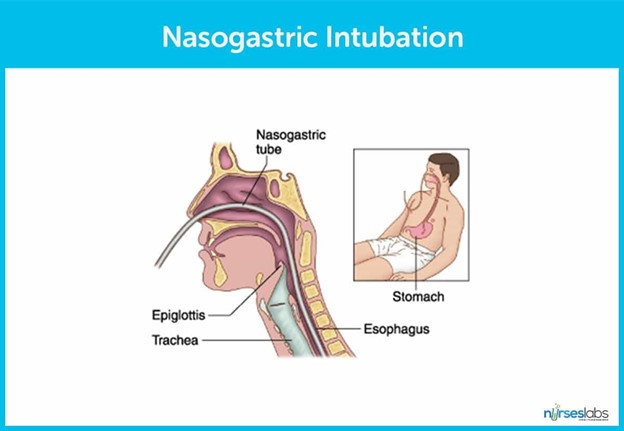A nurse is planning care for a client who has a new prescription for parenteral nutrition (PN) in 20% dextrose and fat emulsions.
Which of the following is an appropriate action to include in the plan of care?
Change the PN infusion bag every 48 hr.
Prepare the client for a central venous line.
Obtain random blood glucose daily.
Administer the PN and fat emulsion separately.
The Correct Answer is B
Prepare the client for a central venous line.
Parenteral nutrition (PN) with 20% dextrose and fat emulsions is a hypertonic solution that requires infusion through a central venous line to prevent damage to peripheral veins.

Choice A is wrong because the PN infusion bag should be changed every 24 hours, not every 48 hours.
Choice C is wrong because blood glucose should be monitored more frequently than once daily when initiating PN therapy.
Choice D is wrong because PN and fat emulsions can be administered together in a total nutrient admixture (TNA)1.
Nursing Test Bank
Naxlex Comprehensive Predictor Exams
Related Questions
Correct Answer is D
Explanation
Notify the healthcare provider.
The nurse should first notify the healthcare provider of the error in administering the IV bolus.
This is important because the healthcare provider can assess the situation and provide guidance on how to proceed.
Choice A is not the correct answer because obtaining the client’s vital signs is important but not the first action the nurse should take.
Choice C is not the correct answer because documenting the incident in the client’s medical record is important but not the first action the nurse should take.
Choice D is not the correct answer because assessing the client for adverse reactions is important but not the first action the nurse should take.
Correct Answer is A
Explanation
Gastric residual of 300 mL at the end of the shift is an unexpected finding.
Gastric residual volume refers to the volume of fluid remaining in the stomach during enteral feeding.
A gastric residual volume of less than or equal to 500 mL every 6 hours is considered safe and indicates that the gastrointestinal tract is functioning.

Choice B is wrong because weight gain is expected during enteral feeding.
Choice C is wrong because a blood glucose level of 110 mg/dL is within the normal range.
Choice D is wrong because diarrhea can be a common side effect of enteral feeding.
Whether you are a student looking to ace your exams or a practicing nurse seeking to enhance your expertise , our nursing education contents will empower you with the confidence and competence to make a difference in the lives of patients and become a respected leader in the healthcare field.
Visit Naxlex, invest in your future and unlock endless possibilities with our unparalleled nursing education contents today
Report Wrong Answer on the Current Question
Do you disagree with the answer? If yes, what is your expected answer? Explain.
Kindly be descriptive with the issue you are facing.
